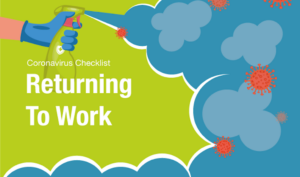
Workplace Safety Reporting – How to Streamline
In pursuing health and success for a business, safety compliance is critical and we understand why. Monitoring injuries and potential hazards can help your workplace

In pursuing health and success for a business, safety compliance is critical and we understand why. Monitoring injuries and potential hazards can help your workplace

Building an in-house human resources department for your business, or a company where people can outsource their HR needs to you? The initial steps can

Once upon a time, we assembled around the office coffee machine to discuss what antics happened over the weekend. Now, of course, COVID-19 has wholly

At work, we try to be serious grownups. But data shows that when we bring child’s play — yes, fun — into work, we are

Remote work isn’t new. In fact, working from home been on the rise since 2010. But this new decade brought with it COVID-19, triggering a

Emojis are both a language and a technology. Cultivate’s recent study into just how we use them shows how creatively we’ve adapted to this hybrid

The second in a two-piece series on Continuous Listening. In Part One of my series on Continuous Listening, I looked at the flaws of taking

Trust plays a role not just in employee recruitment and retention, but in everything from the benefits employers offer to their cultural norms. As leaders
This is the first in a two-piece guest series on Continuous Listening. Human Resources departments own many responsibilities that directly contribute to the overall success

Around here we celebrate Valentine’s Day sentiments all the time. We tell each other how much we appreciate, cherish, are wowed by, awed by, impressed

We all know that office romances happen. But on what scale do they happen, and how exactly do they affect those involved on a professional

Creating a world-class talent acquisition effort that incorporates cool recruiting ideas may seem unrealistic for many HR departments. After all, the pressure to fill the

Employee advocacy doesn’t materialize out of thin air. It starts with a great work environment and happy employees who are willing to speak on your

Good business leaders recognize the value in a good hire, but often times don’t appreciate that one key individual can add to or deter from
Undoubtedly, a sense of well-being is one of the precious joys of living. It’s foundational to who we are and what we do. This important
As U.S. voters exercised their democratic right in last month’s Presidential election, the practice of democracy in rapidly spreading to all areas of life, most
As U.S. voters exercised their democratic right in last month’s Presidential election, the practice of democracy in rapidly spreading to all areas of life, most
Contrary to the belief of many, negotiations actually serve as a stepping stone to a potentially long-term, mutually beneficial alliance. Fair-minded negotiations are not the
How many people trust their managers? A recent study by Edelman found that one in three employees don’t trust their employer. Another study by EY
The topic of entrepreneurship fascinates me. I often wonder what makes one person seek out entrepreneurial opportunities while others are content to be employees. I
Leaders have the social sway to directly and indirectly affect the policies, procedures, and laws of businesses, industries, and regions. The pursuit of leadership opportunities
I came across an article recently that caught my attention. The story centered on the topic of discrimination as commented by and seen through the
There’s no dearth of information about the workplace generational divide–in fact, you’ve no doubt seen countless articles, blog posts, whitepapers, and case studies about how
Work stresses people out — fear of failing, pressure to achieve, having to reply on others for our own success, overload, self-doubt and more… In
“Big money got a heavy hand Big money take control Big money got a mean streak Big money got no soul…” —Rush, Big Money Throughout